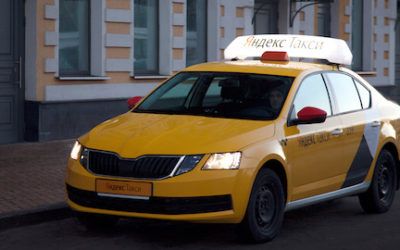Five East German Day Trips you Can Still Take Today
Socialist tourist hotspots that still rock in 2019.
For many years, the Berlin Wall was the singular icon of East Germany.
The East Germans were a people literally walled off from the rest of the world, it was thought, unable to experience the earth like those in the West.
While this was true to a marked extent — citizens of East Germany faced considerable difficulties traveling to even so-called Socialist Brother States — East Germans were just like their West German counterparts on the other side of the wall. They loved exploring, traveling, and, of course, relaxing.
Most of these relaxation and exploration destinations changed dramatically following the fall of the Wall, but if you’re interested in visiting some of the favorite tourist stops of the GDR period, here are some still-standing relics of the East German era you can visit from Berlin.
Subscribe to the mailing list
Get updates from Eastern Europe and more, including guides, tips, and news!
1. Hohenwutzen: The Polish/German Market
If you were a kid in the GDR, one of your favorite trips was almost surely to the Polenmarkt at the German/Polish border.
Once a paper mill town, Hohenwutzen was heavily bombed during the war. The industry was thoroughly dismantled in the years following, with its various bits and bobs sent around the Soviet Union.
Even in all of this destruction, Polish shopkeepers saw an opportunity. Knowing they could supply goods to East Germans at reduced prices — goods the Germans might not be able to find at home — they took advantage of their humble town’s location and began selling cheap products right at the border. After the border opened for visa-free travel in 1972, the Germans were quick to follow, and soon, a bustling Polish-German border market was born.
This market still exists today for much the same purpose. Polish salesmen operate around 700 stalls selling everything from knockoff handbags to discount cigarettes to toys and more. While Polish food and drinks are served, everyone speaks German, with most stands accepting Euros over the Polish złoty.
If you’re looking to pick up some cheap booze, party favors, decorations, or auto parts (or even just take a few quick shots for Instagram), this is the place for you.
How far from Berlin: About an hour by bus
Hours: Every day from 9 AM to 5 PM
Cost: Shuttle bus is €5 each direction picking up from Ahrensfelde. More information here. Market itself is free.
2. Alexandrowka
Potsdam was heavily advertised as a vacation destination in East Germany. Its palaces, such as the Sanssouci and New Palaces, were said to rival those of other European nations, and even walking through its streets today, one quickly becomes struck by the town’s beauty — especially when compared to the charmingly dismal Berlin.
Buried in Potsdam is an “authentic” Russian village called Alexandrowka.
While Russians may scoff at the “authentic” moniker, it is actually pretty close to how things were at the time of its construction. Built in 1826, this UNESCO World Heritage Site was a personal request from Prussian King Friedrich Wilhelm III, who demanded it be constructed to serve as a testament to the growing friendship between Russia and Prussia.
For many years the village housed groups of Russian singers, who could only move into the houses after they had been married. As the houses could not be sold, they were passed down through the family, and to this day many descendants of those original singers live in the area.
Presently this village has several houses, a museum, and a beautiful church built in a mixed Prussian/Russian style. The museum also has a cafe, and shops in the town will happily sell you traditional Russian food and drink.
How far from Berlin: About an hour by train
Hours: Technically open 24/7, but the museum is open every day except Wednesday from 10 AM until 6 PM
Cost: Village is free to visit. Museum is €3.50
3. Rügen Island
During the East German period, Rügen Island was far and away the most popular tourist destination for locals and foreigners alike.
Seamlessly blending nature with bathhouses, spas, and German-Baltic architecture, the island provided tourists from around the Soviet Bloc and beyond with a place to lay back and let their cares fade away — ensured by its variety of beach resorts and forested national parks.
In East Germany, all resorts on Rügen were infamously nationalized, with some new buildings constructed in the Socialist style. Today, a variety of companies own the island’s many amenities, and Germans take trips up north during the summer months to enjoy the area’s sun and splendor. Because of this, it is now the most popular tourist island in all of Germany.
Major sites to visit include the Granitz Hunting Lodge, Jasmund National Park, Cape Arkona, and the island’s many beaches.
How far from Berlin: Three hours by car, four hours by train, and up to five hours by bus. Car travel is recommended.
Best time to go: April through October
Cost: Depends on what you do. Prices are above average because it is a resort town, but they are still manageable.
4. Spreewald
Known in East Germany for their famous Spreewald Pickles, today, the Spreewald is home to canals, forests, and an astonishing wealth of natural beauty.
Tourists can rent boats to travel through the forest’s many twists and turns, or they can simply venture to the nearby village of Lübbenau to see the castle, eat some food, or pick up some souvenirs to bring back to Berlin.
The GDR-era Spreewald was also seen as a day-trip destination. While some did occasionally stay overnight, the area was mainly seen as a place to escape from everyday life, a spot where one could come, relax, and eat a few pickles. Who could complain about a life like that?
Of course, you can still buy pickles in the Spreewald, and while many areas were formerly only accessible by boat, recent renovations have made much of the area available to be reached by bike.
How far from Berlin: About an hour by train or car to Lübbenau
Best time to go: Any time but winter
Cost: Spreewald is free, accommodation costs vary if you want to stay overnight.
5. See what Berlin has to offer
I know, this answer may seem like a cop-out. But there is a lot of East German history still in Berlin, and if you look for it hard enough, you might be surprised by what you can find.
Beyond tourist favorites like the East Side Gallery, which showcases paintings done on sections of the Berlin Wall, one can also spend a considerable amount of time in Treptower Park. This park features memorials to those lost fighting in World War Two, and it’s one of only a handful of places you’ll see a non-graffiti hammer and sickle still in Berlin.
There are also numerous museums that can be visited that document the East German past. The DDR Museum gives you an idea of what life was like at the time, the Stasi Museum in Lichtenberg gives you an eerie look into the East German police force and their spy tactics, and the Museumswohnung WBS 70 gives you the ability to see what a typical apartment in East Berlin looked like.
Similarly, many buildings from the East German era are still available to be seen in the city. I would recommend simply walking down Karl-Marx-Allee; you’ll see beloved structures like Kino International, Cafe Moskau, and of course the famous “Gingerbread Buildings.”
Keep reading
The Top 7 Cheapest (and Easiest!) Places to Learn Russian
The Top 7 Cheapest (and Easiest!) Places to Learn Russian The places where you can learn – and actually use – Russian. Russian ain’t easy. If you’re only used to speaking English, approaching a language like Russian may seem like a daunting task. It’s got weird...
The Best Uber Alternatives in Latvia
The best uber alternatives in latvia Uber isn't here yet. So what else is there? Uber hasn’t officially sunk its claws into Latvia… yet. But if you’re visiting the country, you’re probably going to be justifiably nervous about hailing a cab from the street. After all,...
How to Move to Tbilisi – Visas, Housing, and More
HOW TO MOVE TO TBILISI – Visas, Housing, and more Navigating bureaucracy in Georgia's capital might be tough – but it's so worth it. Tbilisi is — without a doubt — one of the coolest cities in the world today. With a low cost of living and incredible music, art, and...




0 Comments